Comprehensive Foot & Ankle Services to Keep You Moving Forward
Comprehensive Podiatric Solutions
Covering Every Element of Your Foot & Ankle Care.
At Colorado Springs Foot & Ankle Clinic, we offer a wide range of podiatric services to address all your foot and ankle care needs. From common conditions like bunions, flat feet, and plantar fasciitis to specialized care for diabetic foot health and geriatric foot issues, our team is dedicated to providing personalized, expert treatment.
Our goal is to restore your comfort, mobility, and quality of life with compassionate, comprehensive care. Explore our full list of services to see how we can support your foot and ankle health.
Request an Appointment for Expert Foot & Ankle Care
Contact Us
We will get back to you as soon as possible
Please try again later
Ankle Sprains
Causes, Risks & the Importance of Proper Treatment
Ankle sprains are commonly caused by an unnatural twisting or excessive force applied to the ankle bones of the foot, which often leads to the stretching or tearing of one or more ligaments located on the outside of the ankle. These ligaments play a crucial role in stabilizing the joint, and when they are injured, it can result in pain, swelling, and difficulty in movement.
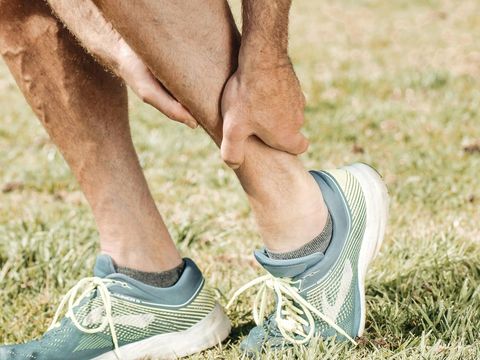
If not properly addressed and treated in a timely manner, ankle sprains can potentially develop into long-term problems, such as chronic instability or recurring injuries. These issues can significantly affect a person's mobility and quality of life over time.
Therefore, understanding the importance of immediate care and rehabilitation is essential to prevent further complications.
Bunions
Misaligned Big Toe Joints and Their Impact on Foot Health
Bunions occur when the joints at the base of the big toe become misaligned, causing the affected toe to gradually angle toward the other toes. Over time, this malalignment can create a noticeable bump on the side of the foot.
As the condition progresses, the area often becomes red, swollen, and tender. These symptoms can make it painful to wear certain types of shoes and can significantly impact overall comfort.
In many cases, bunions develop due to inherited foot structures, but they may also be influenced by factors like poorly fitting footwear, arthritis, or repetitive stress on the feet.
Without proper attention and care, bunions can worsen. This can limit mobility and make everyday activities more challenging, emphasizing the importance of early intervention and professional treatment.
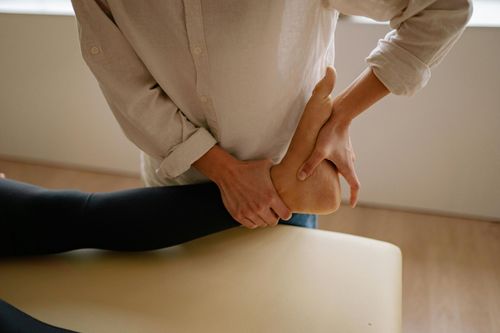
Flat Feet
From Childhood Development to Adult Arch Formation
Flat feet, medically known as pes planus, are a relatively common condition characterized by a low or absent arch along the inside of the foot. In infants and toddlers, having flat feet is entirely normal because their bones, muscles, and ligaments are still soft and developing. At this early stage, the longitudinal arch—the curve typically seen along the inner edge of the foot—has not yet formed.
As children grow, their foot structure gradually changes. The muscles strengthen, bones harden, and supportive tissues tighten, allowing the arch to take shape during the early years of childhood. By the time most individuals reach adulthood, they have developed a visible arch, enabling their feet to better distribute weight, absorb shock, and provide stability during movement.
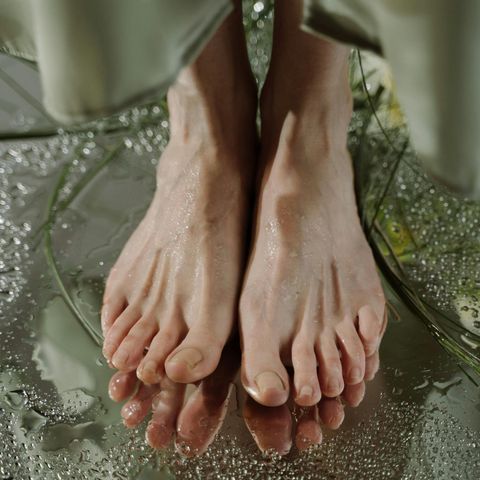
However, not everyone follows this progression. Some people retain flatter arches into adulthood, either due to genetics, underlying health issues, or environmental factors. While flat feet do not always cause problems, they can sometimes lead to discomfort, changes in gait, or increased stress on the ankles and knees, making proper care and, if necessary, professional evaluation important for maintaining overall foot health.
Hammertoes
Recognizing, Understanding, and Addressing Bent Toes
Hammertoe is a common deformity that affects the second, third, or fourth toes, causing them to bend at the middle joint into a shape resembling a hammer. This condition often develops due to an imbalance in the muscles, tendons, or ligaments that normally keep the toe straight. Factors such as wearing tight or ill-fitting shoes, genetic predisposition, or underlying conditions like arthritis can contribute to the development of hammertoe.
Initially, hammertoes may remain flexible and respond to non-surgical treatments, such as changes in footwear, orthotic inserts, or targeted exercises to strengthen the toe muscles. However, if left untreated, the deformity can progress, causing the toe to become rigid and painful. In advanced cases, the stiffness and discomfort can interfere with walking, making everyday activities challenging. At this stage, surgical intervention may be necessary to correct the deformity and restore function to the toe. Early diagnosis and treatment are key to managing hammertoe effectively and preventing long-term complications.
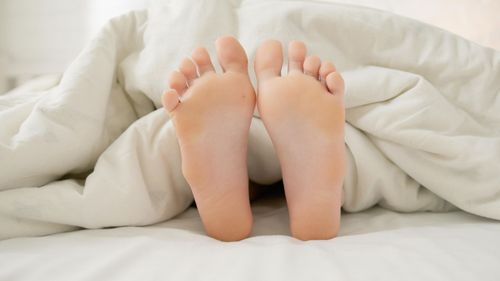
Diabetes & Your Feet
Preventing Small Wounds from Becoming Big Problems
With a diabetic foot, even a minor wound, such as a blister caused by tight-fitting shoes, can lead to significant complications if not addressed promptly. This heightened risk is due to the effects of diabetes on circulation and healing. Diabetes reduces blood flow to the feet, depriving tissues of the oxygen and nutrients needed for proper healing. As a result, injuries heal more slowly and are more prone to infection.
Left untreated, these small wounds can escalate into serious issues such as ulcers, infections, or even tissue damage that may require surgical intervention. Nerve damage, a common complication of diabetes, can further exacerbate the problem by dulling sensation in the feet, making it harder to notice minor injuries before they worsen.

Preventing these complications requires diligent foot care, including wearing properly fitting shoes, inspecting feet daily for any signs of injury, and seeking prompt medical attention for even minor wounds. Managing blood sugar levels and maintaining regular checkups with a healthcare provider are also essential for reducing the risk of diabetic foot problems. Early intervention is crucial to protect foot health and prevent long-term complications.
Heel Spurs
Expert Care for Plantar Fasciitis and Arch Support
Plantar fasciitis, often referred to as heel pain, is a common condition caused by inflammation of the plantar fascia, a thick band of tissue that runs along the bottom of the foot, connecting the heel to the toes. This inflammation typically results from overuse, excessive strain, or stress on the foot, leading to pain that is often most noticeable with the first steps in the morning or after long periods of rest.
At our practice, we specialize in diagnosing and treating plantar fasciitis and related arch pain. Our expert evaluation includes a thorough assessment of your foot mechanics, lifestyle factors, and activity levels to determine the root cause of your discomfort. Based on your individual needs, we may recommend customized orthoses, or shoe inserts, designed to provide targeted support to the arch and alleviate pressure on the inflamed areas.
These custom orthoses not only help reduce pain but also improve foot alignment, enhance stability, and prevent further strain. Our goal is to help you find lasting relief from plantar fasciitis and get you back to your daily activities with improved comfort and mobility. If you're struggling with heel or arch pain, we are here to provide the care and support you need.
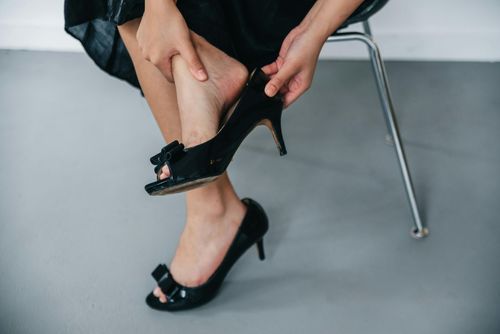
Corns
Causes and Care for Your Feet
Corns and calluses are natural protective responses of the skin, forming as thickened layers of compacted, dead skin cells. They develop as a defense mechanism to shield the underlying tissues from excessive friction or pressure. These conditions commonly arise from repetitive rubbing or irritation, often caused by ill-fitting shoes, high heels, or abnormal foot mechanics that create pressure points.
Corns typically appear on the toes, particularly over bony areas, where they may feel small, round, and tender to the touch. Calluses, on the other hand, generally develop on the soles of the feet, especially in weight-bearing areas like the heels or the ball of the foot. Unlike corns, calluses tend to be larger and less defined, but they can still cause discomfort if not properly managed.
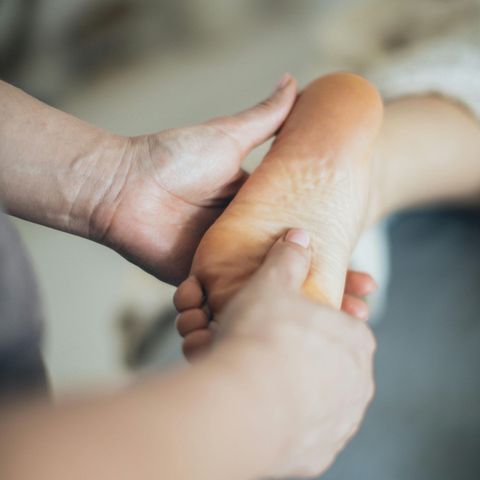
While corns and calluses are generally harmless, they can become painful or lead to complications, particularly for individuals with conditions like diabetes or poor circulation. Treatment often involves reducing the source of friction, such as changing footwear or using protective pads. In some cases, a podiatrist may need to remove the thickened skin or recommend orthotic devices to redistribute pressure and prevent recurrence. Proper foot care and early intervention are essential to maintaining comfort and preventing further issues.
Athletes Foot
Causes, Risks, and Prevention
Athlete's foot is a common and persistent fungal infection that affects the skin on the feet, typically causing itching, redness, and peeling. It is caused by various types of fungi, which thrive in warm, moist environments, making the feet an ideal breeding ground.
The condition is highly contagious and is often spread in areas where people frequently go barefoot, such as public showers, locker rooms, swimming pools, and communal changing areas. The fungi responsible for Athlete's foot can easily transfer from contaminated surfaces or towels to your skin, increasing the risk of infection.
While Athlete's foot is usually mild, if left untreated, it can spread to other parts of the body or lead to complications, such as bacterial infections. Prevention is key and includes practices such as wearing protective footwear in public spaces, keeping feet clean and dry, and using antifungal powders or sprays if you’re prone to infections. If symptoms persist or worsen, seeking treatment from a healthcare professional can help resolve the issue and prevent recurrence.
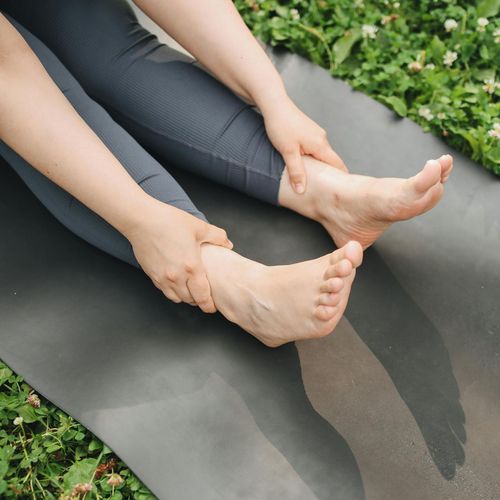
More Comprehensive Podiatric Services
Treating All Your Foot & Ankle Needs
- Achilles Tendon
- Ankle Instability
- Arthritic Foot & Ankle Care
- Calluses
- Crush Injuries
- Fungus Toenails
- Geriatric Foot Care
- Ingrown Toenails
- Injuries
- Neuromas
- Warts



